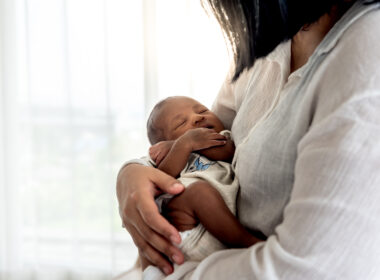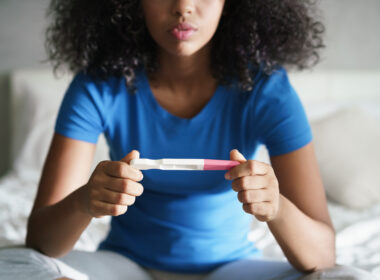It has never been easier to accurately track our health. With smart watches, continuous glucose monitors, and a plethora of fertility monitoring devices, we now have the ability to gather precise data on many of our various biomarkers. A recent study from the University of Toronto and Queen’s University in Canada used various biotechnologies to allow participants to draw connections between their menstrual cycle and their blood sugar [1]. The conclusions from this study will help women with diabetes better tailor their insulin dosages. Women who are insulin resistant or prediabetic can also use this data to more fully understand how to naturally control their blood glucose.
Canadian study combined data from continuous glucose monitors, FitBit smartwatches, and Mira fertility monitors
In order to more fully understand the link between blood glucose levels and menstrual cycle phases, researchers from the University of Toronto, Queen’s University, University of College London, and Washington University followed 49 non-diabetic women for an average of 79 days each, recording a total of 149 cycles.
Each participant was provided with a Dexcom G6 continuous glucose monitor (CGM), which provides constant data on blood glucose levels rather than the more traditional finger-poke testing method. Participants also wore a Fitbit Sense smartwatch to self-report their fertility signs as well as track their steps, and they used the Mira fertility monitor to help them pinpoint ovulation. Mira works by giving users a “fertility score” each day that is calculated using hormonal data gathered by daily urine testing.
Blood sugar changes in predictable ways over the course of the menstrual cycle
The study found that blood glucose generally followed this pattern: levels were low at the beginning of the cycle during menstruation, and at their absolute lowest in the few days leading up to ovulation (the late-follicular phase). Glucose levels gradually increased during ovulation (roughly the midpoint of the cycle), and then continued to increase until they peaked during the luteal phase (the second half of the cycle). Glucose levels then fell sharply after menstruation (and a new cycle) began. Across all the participants’ cycles, the median day for the lowest blood glucose level was cycle day 13.6, and the median highest blood glucose was recorded on cycle day 24.5.
Researchers also gathered hormonal data from the participants using the Mira monitor, and found that higher estrogen levels coincided with lower daily median glucose levels. This suggests that estrogen and blood glucose levels have an inverse relationship, with the rise of estrogen coinciding with a fall in blood glucose.
Food cravings, blood glucose, and menstrual cycle phase
Another factor at play in this study was food cravings. Researchers found that when food cravings were highest, participants had higher daily median glucose levels and they took fewer steps. Of course, the causal relationship between these factors could go both ways, as eating fewer of the unhealthy foods you’re craving will probably cause less of a blood sugar spike. This data also aligns with what we know about sugar cravings being higher during the later luteal phase, when estrogen levels are low and fatigue is higher.
Researchers also mentioned that estrogen promotes lipolytic action, which increases triglycerides and inhibits food intake. This means that during the times of higher estrogen (follicular and ovulatory phases), food cravings should be lower than at times when estrogen is much lower (later luteal phase). In other words, the lack of estrogen you have during your luteal phase could be causing your food cravings to increase during that time, which can also lead to higher levels of daily blood glucose.
Will blood sugar levels become an additional biomarker for fertility awareness methods in the future?
Fascinatingly, the researchers speculated that predictable fluctuations in blood sugar levels could actually help women pinpoint where they are in their cycles. Could fertility awareness methods of the future include blood glucose level readings as an additional biomarker alongside cervical mucus, basal body temperature (BBT), etc.? Since blood glucose level measurement would require use of a continuous glucose monitor, this isn’t yet a practical suggestion for the majority of FAM users. Still, it’s an intriguing suggestion to consider.
How is this consistent (or not) with other research on blood sugar and the menstrual cycle?
This study was not the first to analyze the relationship between blood sugar levels and the menstrual cycle, with one of the first studies dating back to 1942 [2]. The interplay of cycle hormones with insulin and blood sugar levels was not well understood during that time, but thankfully more modern studies paint a clearer picture. The Canadian study refers to a few previous studies, such as 2021 MacGregor et al which found that blood glucose and insulin both cycle rhythmically across the menstrual cycle for women of various body mass index (BMI) and activity levels [3]. A 2010 study, Yeung et al, found something different—their researchers noticed that glucose levels stay fairly steady throughout the cycle, except for “significant decreases” during ovulation and the earlier part of the luteal phase [4].
Older studies measured blood sugar and ovulation less precisely
A major difference between some of these earlier studies and the new Canadian study had to do with blood sugar- and fertility-monitoring methods. The Mira fertility monitor identifies cycle phases much more accurately than calendar-based predictions, which previous studies used. Older studies also only used blood draws to measure participants’ blood sugar levels, and some participants were tested just once per cycle phase. This is vastly less exact than using a continuous glucose monitor (CGM) since blood glucose levels constantly rise and fall throughout the day in accordance with dietary and lifestyle choices.
Your blood sugar levels will look quite different if they are taken first thing in the morning upon rising, right after eating a large carb-heavy meal, or right after exercising. Using a CGM allows researchers to see a more complete picture of the daily average blood glucose, not just a snapshot of one moment in time.
What should future research clarify about the connection between blood sugar levels and menstrual cycle phase?
Future research on the connection between blood sugar and the menstrual cycle could include keeping a food journal, which would provide even more detailed information for how food choices made by participants change blood sugar outcomes.
To take it a step further, a future study could incorporate cycle syncing, asking participants to plan their nutrition and exercise around the expected rise and fall of blood sugar levels depending on cycle phase. Participants could be given a lower-carb meal plan for the luteal phase days when insulin sensitivity is at its lowest, and blood glucose is at its highest, with instructions to increase daily step count and exercise. Researchers could explore whether these dietary and lifestyle shifts have a significant impact on the blood glucose level, to further understand how much of the interplay between factors is hormonal and how much is behavioral.
What does all this mean for women with Type I Diabetes or those trying to control their blood sugar?
Understanding that there is a link between daily blood glucose levels and the phases of the cycle is crucial for women with Type I Diabetes (T1D) who must closely monitor their blood sugar and tightly control their insulin dosing. This woman with a T1D diagnosis created various insulin profiles that went into effect during various points in her cycle, which she tracked using the Sympto-Thermal method of cycle charting. She fully integrated her cycle charts with the amount of insulin she knew she needed in a day, better preventing both hypoglycemic (too low blood sugar) and hyperglycemic (too high blood sugar) episodes. Teens with T1D can also use cycle charting in order to get a better idea of how to manage their diagnosis, instead of merely going on birth control, which is the common recommendation.
While <1% of American women have Type 1 diabetes, half of American adults either have Type 2 diabetes or are prediabetic. Due to our highly-processed diets, many people are dealing with insulin resistance and find it more difficult to control their blood glucose levels. For women who struggle to control their blood sugar, understanding how their cycle plays a role can be helpful when trying to create a diet or exercise plan. Though it might not be necessary for everyone to wear a CGM and gather detailed data on their daily blood glucose, knowing about the link between blood sugar and the menstrual cycle is yet another example of the many health benefits of cycle charting.
Additional Reading:
How my fertility charts helped me customize my Type 1 diabetes treatment
How fertility awareness can help women with Type 1 diabetes











